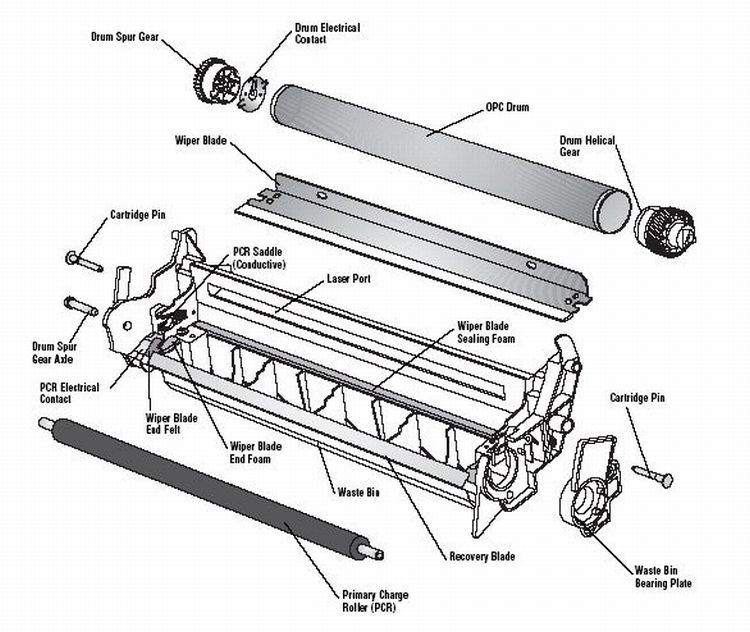The Role of a Bill of Materials in Costings and Pricing
The Role of a Bill of Materials in Costings and Pricing
 A Bill of Materials (BOM) is an extensive list of raw materials, components, and instructions required to manufacture a product. A BOM table usually appears in a hierarchical format, with the highest level displaying the finished product and the bottom level showing individual components and materials.
A Bill of Materials (BOM) is an extensive list of raw materials, components, and instructions required to manufacture a product. A BOM table usually appears in a hierarchical format, with the highest level displaying the finished product and the bottom level showing individual components and materials.
Apart from the manufacturing operations a BOM assists in the management of other functions including purchasing, accounting/finance, and sales. It helps manufacturing companies plan the purchase of materials, estimate costs, control inventory, and minimize production delays and waste.
Accurate and complete BOMs also help identify the cause of a product failure and work quickly to replace the faulty parts, materials, and components. These key documents are at the heart of any manufacturing operation. BOMs can be single- or multi-level dependent upon parts sourcing. The two main types of BOMs are manufacturing bills of materials (MBOMs) and engineering bills of materials (EBOMs). Most companies in the business of manufacturing and assembling print consumables use MBOMs.
Even though the concept of an MBOM is straightforward, creating and managing them can be complicated, especially for products composed of hundreds or thousands of parts. For instance, if it becomes necessary to change one component because a supplier cannot meet its delivery deadlines, this change needs to be replicated throughout the MBOM, wherever that component is used. Some basic parts, like adhesives, may be used in multiple areas.
MBOMs make for efficient and accurate manufacturing. From an MBOM the identification and pricing of all the materials and components needed to make a product before production begins may be conducted. With this, an organization can determine whether it has everything it needs to move forward with minimal risk of delays. This reduces the likelihood of both shortages and overages of materials or components. By helping ensure the right parts and materials are available at the right time and in the right quantities, MBOMs help manufacturers remain within budget and on schedule. Most MBOMs include the following elements – BOM level, part number, part name, part description, part quantity, part cost, and the unit of measure. However, MBOMs do not include labor costs.
Advantages and Value
Why is an MBOM important? By providing and controlling a single accurate record of the materials, components, and assemblies that go into the product, a bill of materials ensures these items are in-house when needed and at the quantities required during production. This minimizes inventory inaccuracies and production delays, both of which cost time and money.
They also ensure product uniformity because when each production run follows the same BOM, the products themselves remain consistent. This helps ensure that the product meets customer expectations, especially when a product is bought multiple times by the same organization. Additionally, MBOMs are critical when products need to meet safety or other performance standards.
The information in an MBOM is also important when it is necessary to track product failures. With this document, it is possible to identify the parts, materials, and components used and zero in on potential sources of any failure. Manually preparing and managing BOMs can quickly become unwieldy and error-prone. The task of maintenance of a company’s MBOMs should be performed by one person or department dependent upon their complexity and volume. This control helps to prevent mistakes from being made due to human error.
Correctly controlled and utilized MBOMs interface with other management control functions including:
- planned purchases of materials and components
- tracking and planning material requirements and purchases
- estimation of material costs and inventory management
- enables prediction of materials shortages and planned and unplanned downtime
- budget control
- production scheduling
- record maintenance
- waste reduction
- determining the cause of product failure and prompt replacement of faulty materials
- and improvement of supply chain security
The Development of the BOM Concept
 Historically BOMs started being used in the 1930s. Engineers used early versions of BOMs to specify components within technical drawings. In the sixties, advances in production planning emerged, like Toyota’s Just-in-Time (JIT) approach which would later evolve into Lean Manufacturing.
Historically BOMs started being used in the 1930s. Engineers used early versions of BOMs to specify components within technical drawings. In the sixties, advances in production planning emerged, like Toyota’s Just-in-Time (JIT) approach which would later evolve into Lean Manufacturing.
In the United States, a similar approach was developed called Material Requirements Planning (MRP). With MRP, companies could plan for needed materials based on a master production and purchasing schedule which was based on the parts included in the MBOM. This reduced inventories ensured timely deliveries, and better-matched material availability with manufacturing and market requirements.
In the eighties, MRP was improved to include financial analysis, marketing, human resources, and accounting aspects. It was renamed MRP II. In the nineties this evolved further into Enterprise Resource Planning (ERP) and is characterized by digital transformation, on-demand manufacturing, globalization, high product complexity, and customization, to cope with the emergence of novel high-performance materials and production processes. MRP, MRP II, and ERP all rely on accurate and up-to-date MBOMs for their efficient operation.
Software has been developed to enable fast and accurate manufacturing control based on MRP, MRP II, and ERP helping to control the supply chain and providing inventory management automating many processes.
Who Uses a Bill of Materials?
Manually preparing and managing BOMs can quickly become unwieldy and error-prone. As already mentioned, the task of maintenance of a company’s MBOMs should be performed by one person or department dependent upon their complexity and volume. This control helps to prevent mistakes from being made due to human error. The use of sophisticated software such as Oracles NetSuite ERP, SAP ERP, and Sage X3 helps to streamline the broad reach of systems within a manufacturing organization.
Given the range of information within a BOM, creating one often requires input from a company’s cross-section of functions. This can include design, engineering, purchasing, materials management, and manufacturing. Different areas within a company are primary users of MBOMs.
MBOM Basics
A typical MBOM will start with the design of an object to be manufactured. There might be engineering diagrams or CAD drawings dependent on the type of manufacturing. Below is an exploded view of a toner cartridge drum, charging, cleaning, and waste bin. As can be seen, there are multiple parts for this cartridge sub-assembly.

This product is one part of a multilevel MBOM. This cartridge comprises two sub-systems the other being the toner hopper and top cover assembly. The MBOM for this part is as follows:

As can be appreciated, this document flowing into associated documents such as sales orders, production orders, materials requisitions, and production materials costing records can all be updated correctly and recorded.
The MBOM is a key tool in the control and at the foundation of any manufacturing operation. The development, maintenance, and use of MBOMs help manufacturing operations run smoothly, cost-effectively, and efficiently.
*This article was originally published in RT ImagingWorld magazine Issue 125. Click here to download a free digital version.
About Graham Galliford
 Graham Galliford is a world-renowned consultant to the imaging industry. His work has encompassed the technology of all types of products for printing but has worked in the field of toner-based printing technology since 1974.
Graham Galliford is a world-renowned consultant to the imaging industry. His work has encompassed the technology of all types of products for printing but has worked in the field of toner-based printing technology since 1974.
He founded Galliford Consulting & Marketing, a techno-commercial consulting business concerning toner-based imaging processes in 1994. The particular emphasis of the firm is on digital printing with electrostatic toner. Operating from a unique facility for R&D on digital printing materials the firm has completed many projects concerning the formulation, manufacture, application, and marketing of these products. Galliford has been a regular speaker at conferences in North America, Europe, and Asia on all aspects of digital printing and the toner business from technology to marketing to manufacturing. He has made over 80 presentations to industry gatherings over the last 30 years including Seminars on Digital Printing Technologies and Chemically Prepared Toner Technology and Markets.
Read other articles by Galliford:
- Digging Deeper into Inkjet Ink Market Share
- Manufacturing Color Toner – Who How and Where
- Supply Chains and Market Integration
- Debate: Toner & Laser Supplies Will Continue to Dominate
- Testing Cartridge Components and Meeting Standards
- The Controversy Over Cartridge “Contaminants” – An Attempt to Avoid Bias
- Facts and Lies over the Toxins in Your Printer Cartridges
- Why Most OEMs Are Japanese





Leave a Comment
Want to join the discussion?Feel free to contribute!